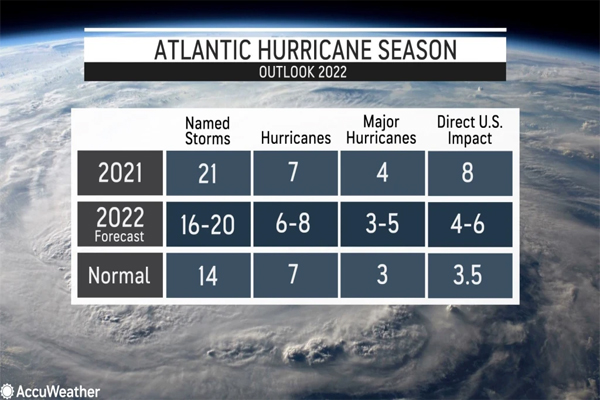
Brian K Sullivan, Bloomberg News
BOSTON
EnergiesNet.co 03 31 2022
Another active hurricane season is in store for the Atlantic, with between 16 and 20 storms named across the basin by the time it ends in November, AccuWeather Inc. said.
The commercial forecaster sees six to eight of the storms becoming hurricanes, with three to five of them growing into major systems. That occurs when when a storm’s winds exceed 111 miles (179 kilometers) per hour. Four to six of them could directly strike the U.S., it said.
“Now is the time to prepare, especially since some communities are still recovering from devastating storms over the last couple of years,” the company said in a statement.
The forecast is also a warning sign for the energy, agriculture and insurance industries that can be roiled by major hurricanes. Such storms can inflict heavy disruptions to oil and natural gas production as well as crops, which could pinch sectors already stretched by the war in Ukraine. The Gulf Coast is home to about half of the U.S.’s refining capacity, while Florida is the second largest producer of orange juice behind Brazil.
Sea-surface temperatures across the Atlantic are warmer than normal, which is a key factor underpinning AccuWeather’s forecast for the season that officially starts June 1. There’s also a chance that a weak La Nina could persist through the start of the season, which would cut down on wind shear across the Atlantic. That would enable more storms to form.
Read more: How La Nina, El Nino play havoc with markets, weather: QuickTake
Last year was the third most active on record, according to AccuWeather, with 21 named storms, including Ida, which flooded New York City. The average season has 14 named storms.
bloomberg.com 03 30 2022











